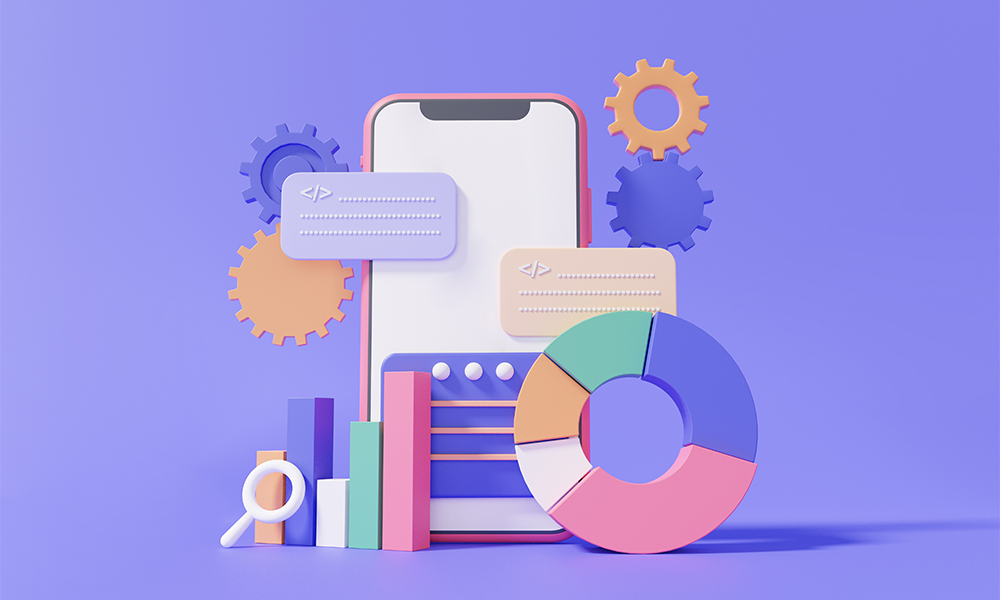
Today’s blog will be about something that we all have experienced.
You know when you tap an app, and instead of opening instantly, it stutters. It freezes. It makes you stare at a loading spinner like you’re waiting for a dial-up connection in 1998.
And what do you do? You delete it.
Because yes, nobody has patience for a slow app/
If your app takes more than a couple of seconds to load, users will bounce faster than a bad Tinder date, and once they’re gone, they’re not coming back.
You don’t need a complete rewrite to speed things up. Small tweaks, smart optimizations, and a little attention to detail can turn your sluggish app into a smooth, lightning-fast experience.
So, if you’re tired of seeing users drop off because your app feels like it’s running through molasses, keep reading. These performance optimization tips will help you fix the lag, reduce crashes, and keep people actually using your app.
Why Speed Matters More Than You Think
Before we get into the fixes, let’s talk about why speed is such a big deal.
- 53% of users abandon an app if it takes more than 3 seconds to load.
- Slow performance is the #1 reason people uninstall apps.
- Every 1-second delay in load time can drop conversions by up to 7%.
In other words, if your app is slow, you’re losing users and money.
But speed isn’t just about keeping people from rage-quitting. A fast app also:
✔ Improves engagement – People use it more when it feels snappy.
✔ Boosts retention – They’re less likely to delete it out of frustration.
✔ Helps with app store rankings – Google and Apple favor well-optimized apps.
So, how do you make your app faster?
1. Reduce App Size
Nobody Wants to Download a Dinosaur
Remember when smartphone storage was measured in megabytes? Yeah, neither do we. But even with today’s massive storage, app size still matters.
Bigger apps take longer to download, especially on slow networks. Use more device storage, annoying users who are constantly deleting stuff, and they can slow down performance because they’re bloated with unnecessary code.
How to Slim Down Your App
- Compress images and assets by using tools like TinyPNG or WebP format.
- Remove unused code. Dead code adds weight without adding value.
- Use ProGuard/R8 for Android or App Thinning for iOS. It strips unused resources.
- Lazy-load non-essential features – Only load what’s needed when it’s needed.
Aim to keep your app under 50MB if possible as users are much more likely to download and keep smaller apps.
2. Optimize Network Calls and Stop Making Users Wait
Ever opened an app only to see a spinning wheel while it fetches data? That’s your app making too many or too slow network requests.
How to Speed Up Network Performance
- Batch requests. Combine multiple API calls into one where possible.
- Cache responses. Store frequently used data locally so it doesn’t reload every time.
- Use CDNs. Serve static assets like images and video from fast, distributed servers.
- Implement pagination by loading data in chunks instead of all at once.
If your social app loads 100 posts at startup, try loading 10 first, then fetch more as the user scrolls.
3. Fix Memory Leaks Before Your App Crashes
Memory leaks are like leaving every app open on your phone – eventually, things slow to a crawl or crash entirely.
How to Find & Fix Memory Leaks
- Use profiling tools. Android Profiler for Android and Instruments for iOS can track memory usage.
- Avoid strong reference cycles. Common in closures/delegates, especially in Swift/Kotlin.
- Release unused resources. Bitmaps, database connections, and listeners should be cleaned up.
Test your app for 30+ minutes of continuous use, as many leaks only show up over time.
4. Optimize Rendering (Make Your UI Buttery Smooth)
Laggy scrolling? Janky animations?
That’s your app struggling to render frames fast enough.
How to Improve UI Performance
- Reduce overdraw by avoiding unnecessary nested layouts or complex view hierarchies.
- Use RecyclerView/UICollectionView. Recycles views instead of recreating them.
- Avoid expensive operations on the main thread. Move image decoding, JSON parsing, etc., to background threads.
If your app’s feed stutters when scrolling, check if you’re loading images on the UI thread – a common culprit.
5. Minimize Battery Drain
If your app drains battery like a vampire, users will uninstall it.
How to Reduce Battery Usage
- Limit background activity. Don’t wake the device unnecessarily.
- Optimize location updates. Use lower accuracy or passive listening when possible.
- Batch sensor/data usage. Collect data in intervals instead of constantly.
Android’s Battery Historian and iOS’s Energy Logs can help track down power hogs.
6. Test on Real Devices – Emulators Lie
Just because your app runs fine in the simulator doesn’t mean it’ll work on a 5-year-old Android phone with 2GB of RAM.
How to Test Performance Properly
- Use low-end devices because if it works well there, it’ll fly on flagships.
- Test on slow networks like 3G or throttled LTE, to simulate real-world conditions.
- Monitor ANRs/Watchdogs
7. Keep Monitoring After Launch
App performance degrades over time. New features, OS updates, and third-party SDKs can introduce slowdowns.
How to Stay on Top of Performance
- Use Firebase Performance Monitoring or New Relic to track load times, crashes, and more.
- Set up alerts and get notified if latency or crash rates spike.
- Regularly audit your app, like every few months, and check for new bottlenecks.
Final Tip
Faster apps = happier users = better retention and more revenue.
So don’t treat performance as a nice-to-have – make it a priority from day one.
If you’re an app owner and reading this makes you worry, reach out to The Apptitude at (512) 885-0379. We can help you with a slow app so that users won’t even have time to get bored waiting.

